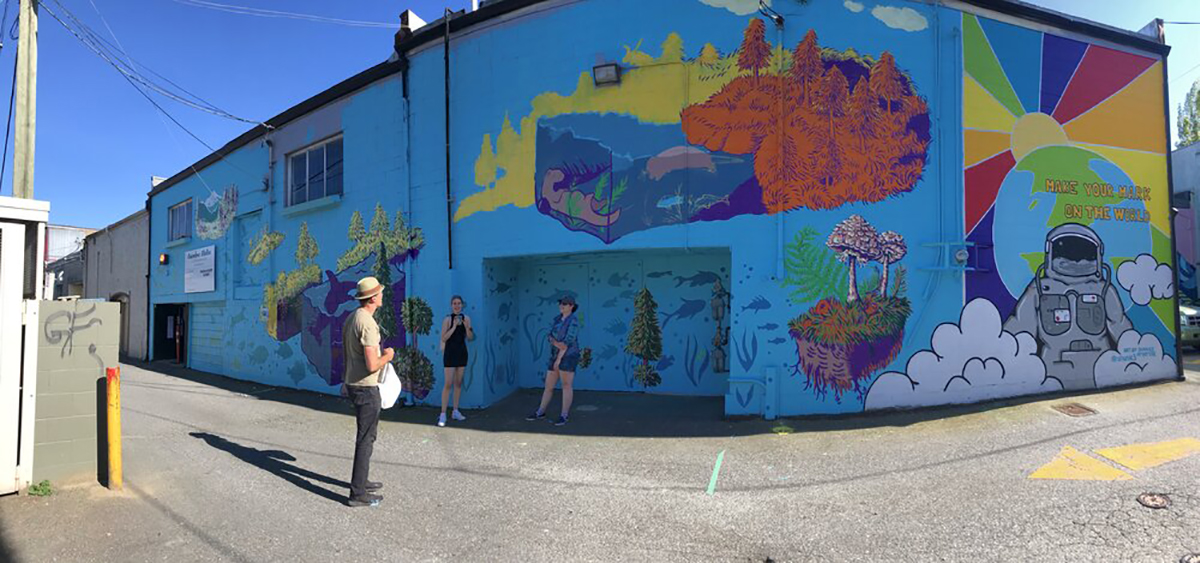Two of the artists behind the Emerge program’s CITI/SEEN mural project
I recently got to talk with Chantelle Trainor-Matties and Dona Park, two artists who are part of the Emerge program at The Reach Gallery and were involved in painting the CITI/SEEN mural on Bob Bos laneway in downtown Abbotsford. The artists explained what it was like to work with a team of five artists to create the huge mural and what they learned from being a part of the Emerge program. Part of this team was Sean Karemaker, a visual artist from Vancouver who was the mentor artist for the Emerge program, which pairs rising artists from the Fraser Valley with a professional artist to develop their skills.
Can you start by telling me about the process behind creating the mural, especially the collaboration between five different artists, including the lead artist Sean Karemaker?
Dona Park (DP): I think the process actually went smoother than I thought it was going to be. We met on Zoom since we couldn’t meet in person, and Sean Karemaker, the lead artist, provided us with the general theme, which was the environment. Generally, everybody had unanimous thought — we all agreed with each other and provided pieces of our own styles and past artworks. Sean weaved our work together, added his own artistic flare and style, and combined all of our artworks into this beautiful sketch/mural.
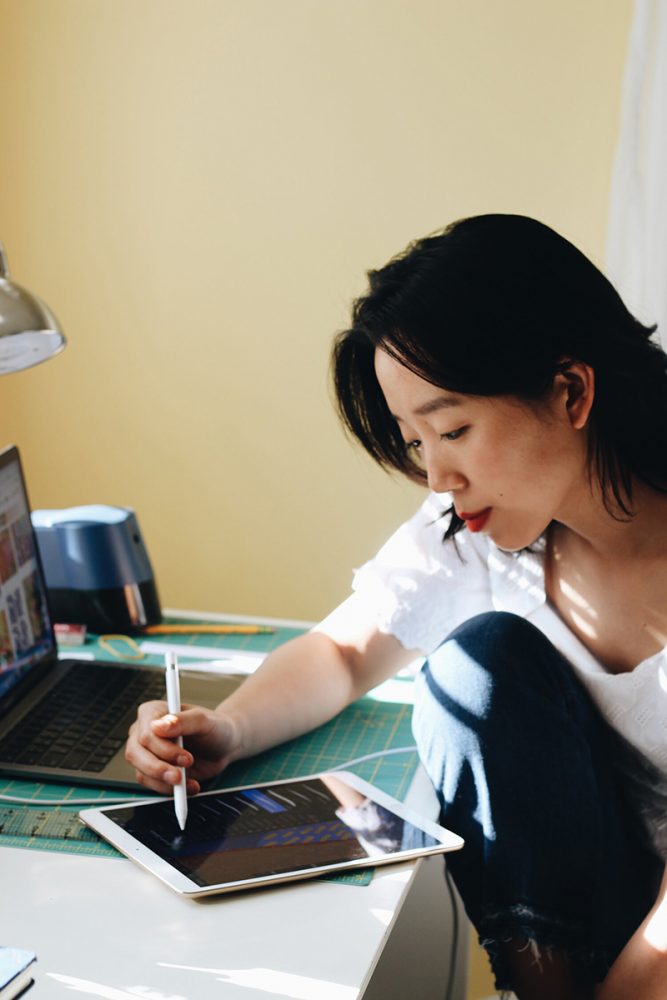
Dona Park Sketching. (Dona Park)
Chantelle Trainor-Matties (CT): When you apply for something like this, you don’t know what the head artist is going to have in mind, and what was really nice was that he didn’t go, “This is what you guys are painting and the design is ready.” It was basically, “Hey, we’re starting from scratch, and it’s an environmental piece.” It was really nice to know that Sean wanted us all to have something in the mural that we could call our own. For example, I had the pleasure of being able to design some of the animals. It definitely was a really collaborative piece.
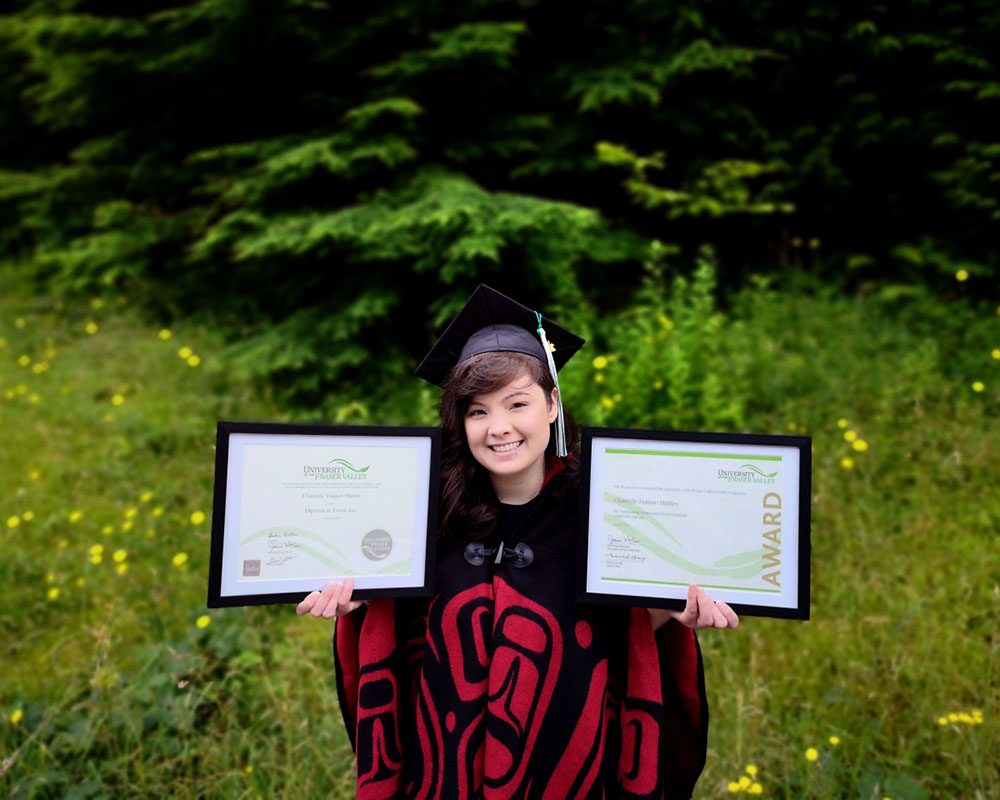
Chantelle Trainor-Matties Graduation. (Joshua Trainor-Matties)
Was it challenging to combine five different artistic styles into one piece?
CT: I thought it was going to be more challenging than it was. At first I think we were all a little anxious because you start seeing everyone’s different style, and you think, “Oh, this is going to look like five different people did it.” But you end up learning to work together, and you kind of merge your style to fit a little bit of theirs, and they merge theirs to fit a little bit of yours. It’s really good to help you develop as an artist too.
DP: Everyone was pretty flexible too; we had a flexible attitude, and we also wanted to learn from the lead artist as well. Personally for me, in the beginning stages I was like, “How are we going to put these five different distinct styles together?” There was discussion of the mural kind of looking like a panel for each artist so that we could kind of preserve our own style while incorporating the theme of the environment, but I think everyone had a willing attitude to learn from each other and also from Sean.
How long was the entire process from start to finish? From the first Zoom meeting to the last brushstroke?
CT: We first met April 6, a little after we found out we were chosen as Emerge artists, and it took us five days to paint the entire mural, and the painting process was in mid-July. We had a lot of time in between the first meeting and the actual painting to be sketching and meeting once a week to discuss it. We weren’t really in a rush because we had no idea when we would actually be able to do it. Then there was over a month after the mural was done for Sean and Mike Peredo to work on the AR function.
Can you talk a little about the augmented reality (AR) component of the piece?
CT: It was made with Spark AR, and it is something that Sean has been doing a lot in his work. He is planning to teach us how to put AR into our work, so we didn’t really get to see the behind- the-scenes of that just yet, but we’re going to be learning it.
DP: Spark AR is compatible with Facebook and Instagram. So you know all the filters you use on your face on Instagram? That’s all through Spark AR. So it’s kind of like a filter for the mural. There are more details and there are moving animations — the mural kind of becomes this pop-up book.
Can you tell me a little about your experience with the Emerge program? What have you learned, and how have you developed as an artist from being part of Emerge?
CT: The mural is my only experience with Emerge at The Reach. I learnt about it last year when they did their first mural, and this is the second mural that I’ve been a part of. I was looking forward to meeting new artists; I think that the best way to meet artists is when you’re working on a project together. Being able to work with Sean and discuss how he starts and stops projects, or how he encourages you to open your sketchbook every day, and him wanting to teach us about AR and the ways technology can add to your artwork — it’s something that I’m looking forward to learning.
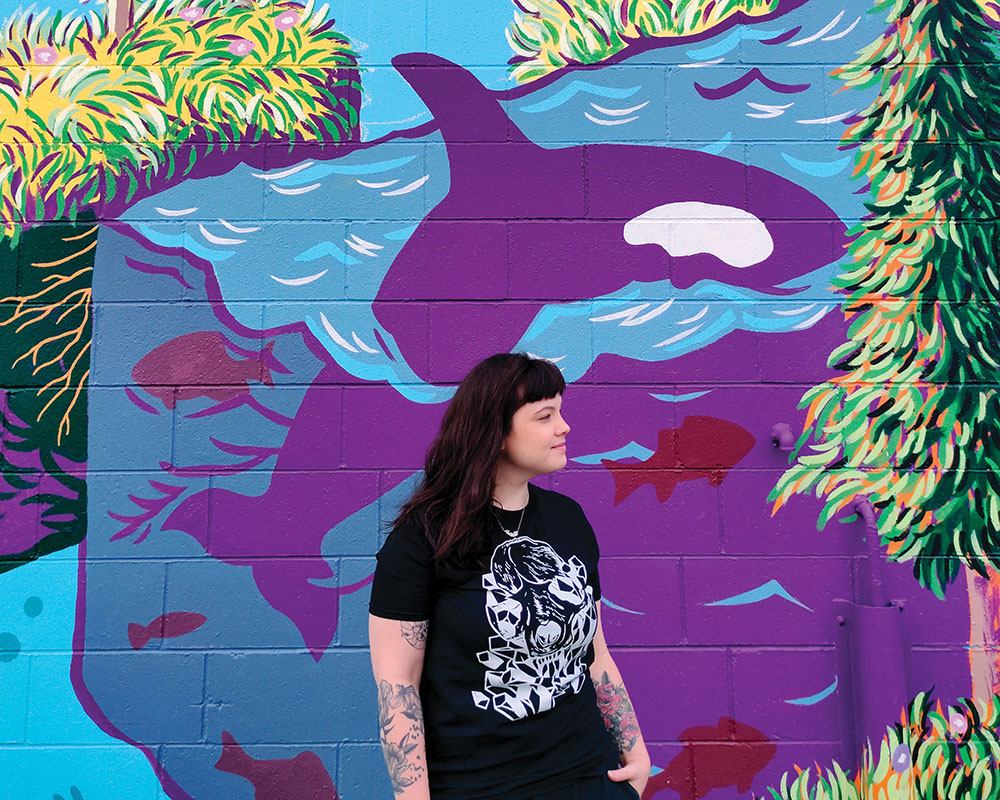
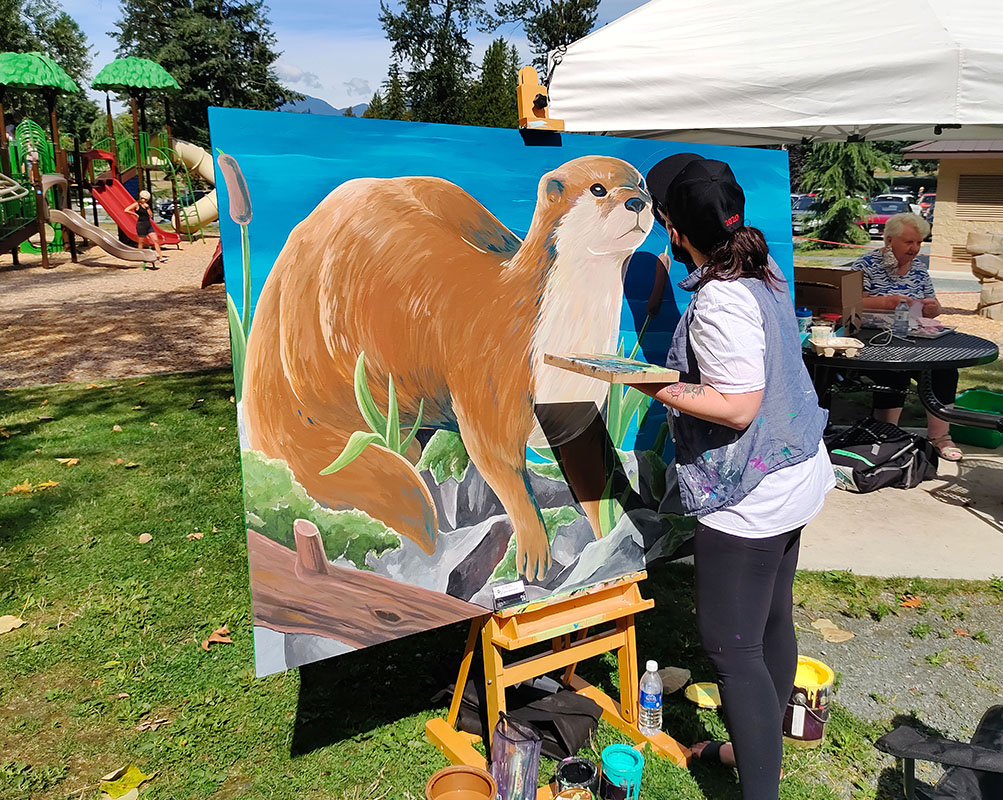
Chantelle Trainor-Matties Paintings. (Joshua Trainor-Matties)
DP: Similar to what Chantelle said, I have done murals before but not in Canada. I’ve lived and worked abroad since I’ve started university. Coming back to my hometown, Abbotsford, it’s been really great to connect to local artists and to contribute something to the community. Getting to see people interact with us while we were participating in the program was really cool. The staff at The Reach would come by to say “hello,” or even just bystanders or people taking a walk with their kids would just greet us; I really like the interaction with the community. The highlight of the Emerge program is that you get to chat with local artists, and you get to talk to a lead artist from Vancouver who has a lot of experience.
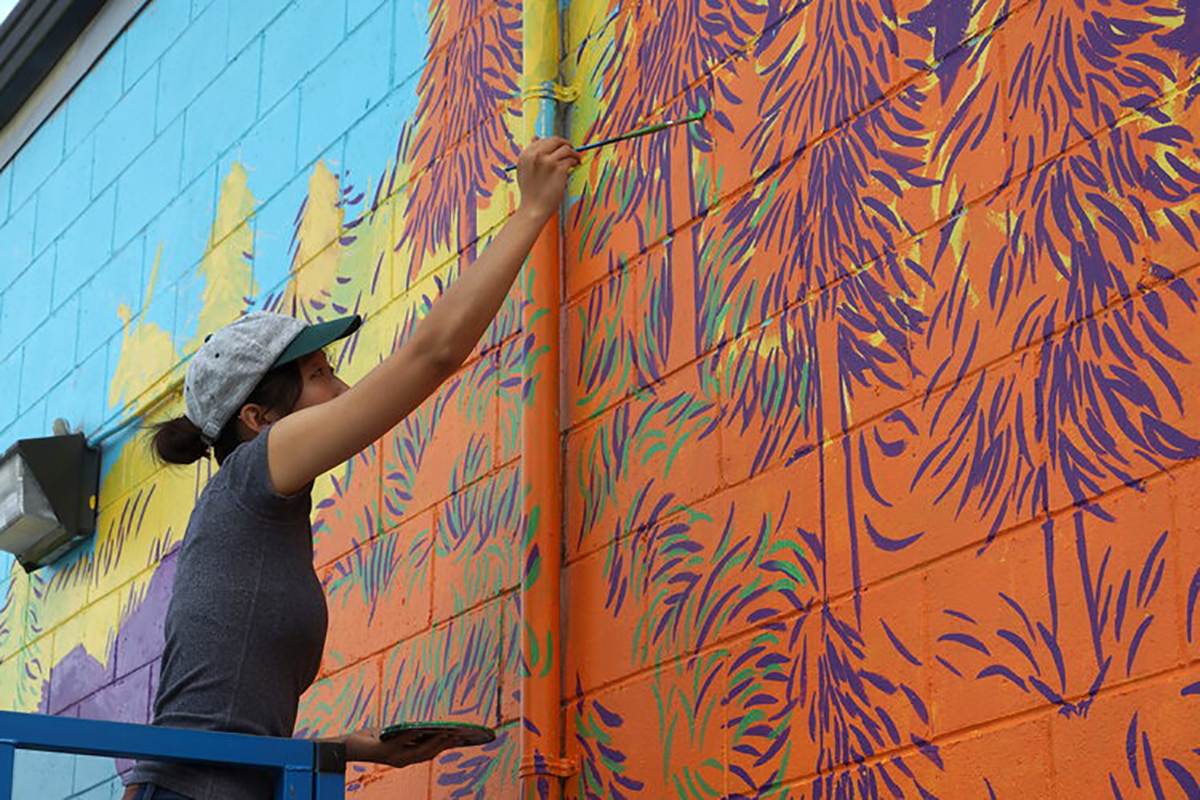
Dona Park Painting the CitiSeen Mural. (Joseph P.S. Klymkiw)
CT: It’s fantastic networking too. Painting together brings up so many conversations because different artists know different people, and we’re able to get advice from each other. We all learnt from Sean for sure, but we also all learnt from each other.
DT: It was this ball of energy that we all needed during the pandemic: engaging with artists and talking with people to get inspired by each other’s ideas. It was just inspiring.
Chantelle, congrats on your Arty Award nomination, and congrats on graduating from your program at UFV as well. What are your next steps as an artist?
CT: Art has kind of slowed down a little bit due to the pandemic, so a lot of shows and exhibits were cancelled. I am doing some graphic design, taking on projects at home, and even designing for different projects at UFV as well. I took part in the Chilliwack Mural Festival in August, and now that mural season is over it’s going to slow down a little bit. I sell pieces through my website; I do freelance work and contract work where people license out my designs for clothing. I’m keeping decently busy.
Dona, I saw that you were involved in different murals and art projects for peace campaigns in Cambodia last year. Do you have any plans to continue to travel when it’s safe to do so? What are your next steps as an artist?
DT: I’ve worked with a peacebuilding organization in Cambodia since 2017, and right now I’m their creative peacebuilding advisor. I’m working with them to create a peacebuilding/arts curriculum for a group there, and that’s what I’ve been doing this past summer. My contract is supposed to bring me to Cambodia sometime, so maybe after COVID is over I can head over there for a short time. I’m also a freelance graphic designer and illustrator. Most of my work involves book designing for children’s literature. I’m always developing my portfolio by doing little projects and commissions. A recent project I’ve been involved in is creating podcast illustrations for the University of Notre Dame.
Is there anything else you want the readers of The Cascade to know?
CT: I definitely think that going to art school gets a bad rep, and I think that it’s really important to be able to show people that you can go to art school and you can walk out with a lot of different opportunities.
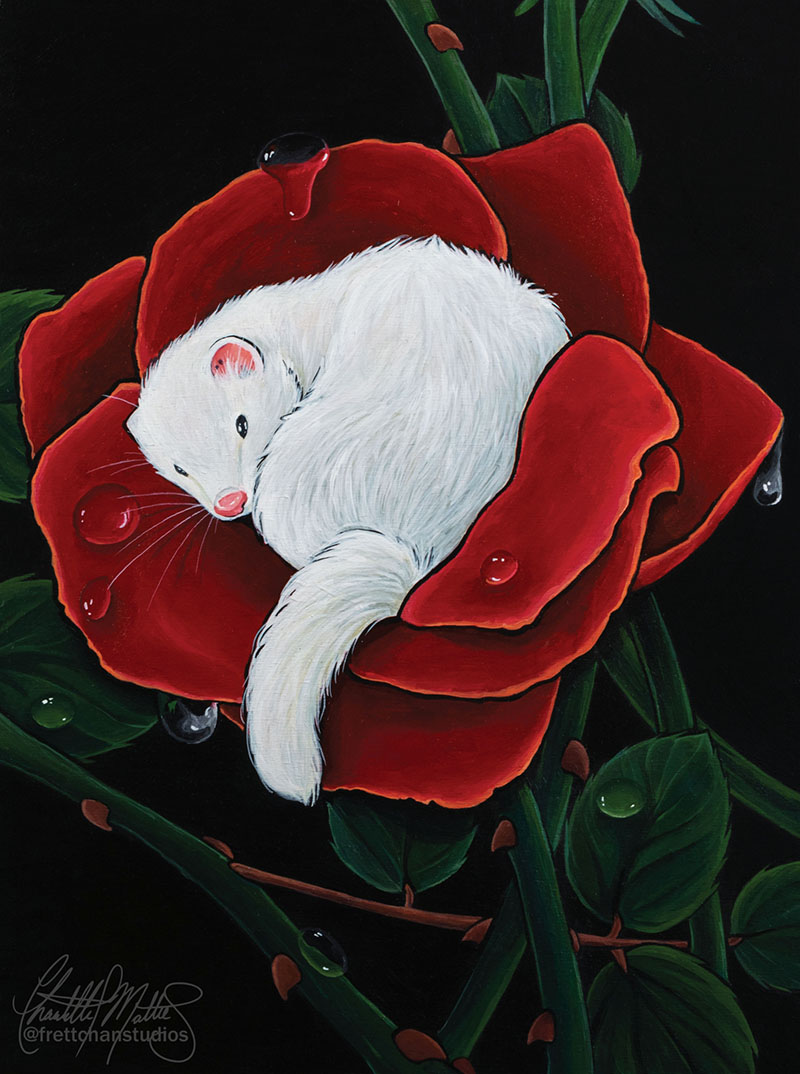
DP: For me, I would want to tell the readers that being creative is commendable, and it’s also a form of protest. I have so many friends who don’t think it’s a career or won’t lead anywhere, but seeing that there’s opportunities like Emerge and just meeting people connected me with more opportunities in different realms. Being creative is very dangerous in a way because it feels like you’re taking a chance, but I think it’s something really worthy and valuable. I think we need art now more than ever, especially during the pandemic because with limited abilities we are forced to be creative.
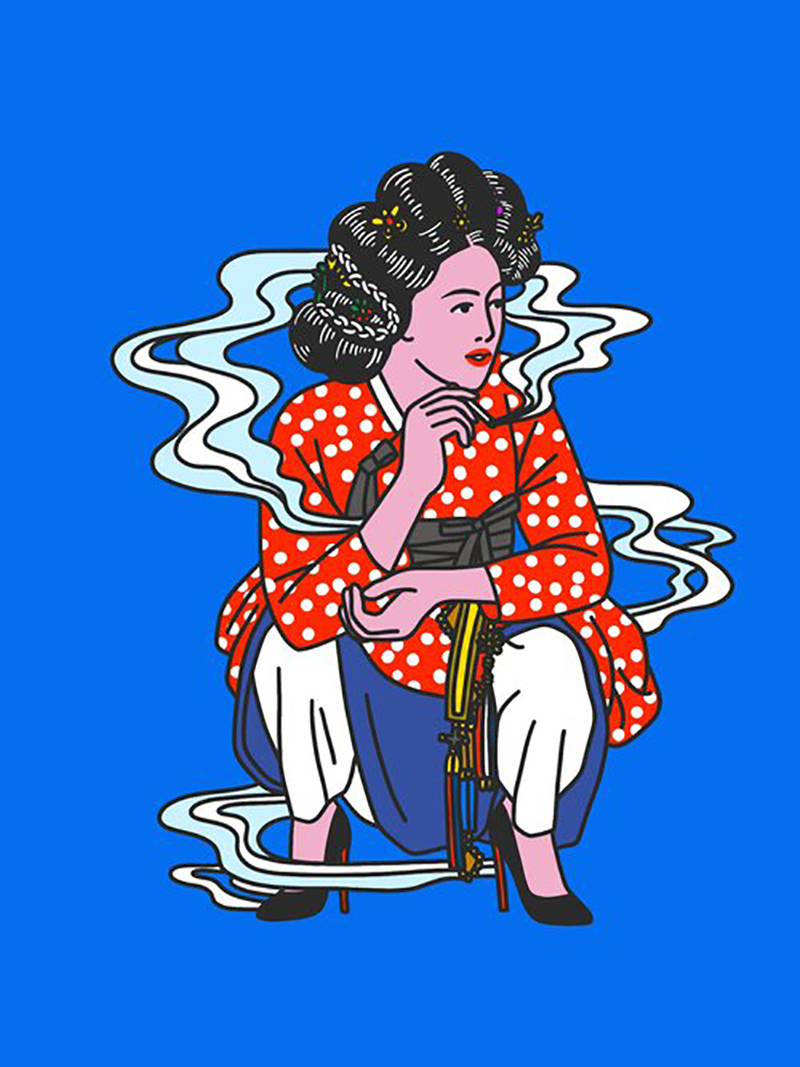
****Interviews were edited for length and clarity.
Andrea Sadowski is working towards her BA in Global Development Studies, with a minor in anthropology and Mennonite studies. When she's not sitting in front of her computer, Andrea enjoys climbing mountains, sleeping outside, cooking delicious plant-based food, talking to animals, and dismantling the patriarchy.

